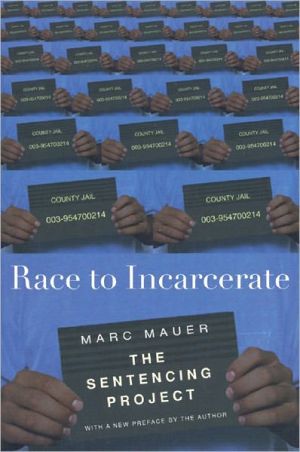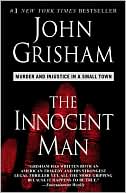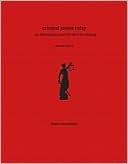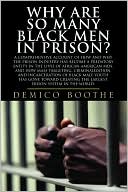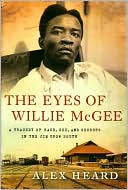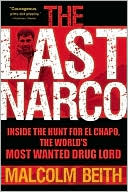Race to Incarcerate
In this revised edition of his seminal book on race, class, and the criminal justice system, Marc Mauer, executive director of one of the United States' leading criminal justice reform organizations, offers the most up-to-date look available at three decades of prison expansion in America.\ Including newly written material on recent developments under the Bush administration and updated statistics, graphs, and charts throughout, the book tells the tragic story of runaway growth in the number...
Search in google:
An updated account of the explosion in America's prison population. Black Issues Book Review. [An] informative—and often disturbing—glimpse of the US prison system and those it affects.
\ \ \ \ \ Chapter One\ \ \ 1—Introduction— The Race to Incarcerate\ \ \ We're on a new higher plateau of crime, which means a new, higher and, I think, permanent prison population. It is very hard for a free society to figure out how effectively to deal with crime rates other than by imprisonment.\ —James Q. Wilson\ \ \ What an interesting populace we have. Nobody seems at all worried by the fact that we have the largest prison population and that it consists preponderantly of young blacks, a whole generation in jail.\ —Murray Kempton\ \ \ In January 1998, the Justice Department issued its semiannual report on prison populations in the United States, noting that there had been a five percent rise in the previous twelve months. Newspapers dutifully reported the story, just as they had similar rises the year before and the year before that. In fact, by now the story was a quarter century old, with the national prison population having risen nearly 500 percent since 1972, far greater than the 28 percent rise in the national population during that time. In the ten-year period beginning in 1985, federal and state governments had opened a new prison a week to cope with the flood of prisoners. The nearly 1.2 million inmates in the nation's prisons was almost six times greater than prior to the inception of the prison-building boom and represented a societal use of incarceration that was virtually unique by world standards. The scale of imprisonment had come a long way sincethe birth of the institution.\ Two hundred years ago, Quakers and other reformers in Pennsylvania had developed the institution of the penitentiary, an experiment in molding human behavior that was befitting of other innovations in the new democracy of the United States. Derived from the concept of "penitence," the new institution emphasized having sinners engage in hard labor and reflect upon the errors of their ways.\ Prior to this, the preferred methods of responding to criminal behavior in both the European nations of the old world and in the American colonies did not include institutions. The jails that existed in Europe and the U.S. served primarily to detain defendants who were awaiting trial and debtors who had not fulfilled their obligations, and they were not places of punishment for felons.\ After a defendant was convicted of an offense, various measures were employed with the goal of deterring the individual from engaging in antisocial behavior in the future. Deviant behavior was viewed not as reflecting a flaw in society but, rather, as sinful and pervasive in society. Those who had offended were generally subjected to relatively swift and severe sanctions, which often varied depending on one's status in the community. For persons of some means who had committed relatively minor offenses, fines were frequently imposed as punishment. Lower-status persons convicted of offenses—servants, apprentices, slaves, and laborers—were usually subjected to the stocks or public whippings. The death penalty was an option in cases as serious as murder, but also for lesser offenses, such as third-time thievery. The use of capital punishment, though, was far less frequent in the colonies than in England. Offenders in the colonies who were not from the immediate community, and sometimes repeat offenders, were generally subject to banishment.\ Much of the rationale for these various punishments can be found in the nature of the colonial society. In an environment where communities were relatively small and their inhabitants well known to each other, public approbation and embarrassment was seen as capable of shaming the offender into desisting from continued illegal activities. Wandering rogues who went from town to town committing crimes were usually banished. Moreover, in a society where labor was in short supply, benefits to the community were derived from punishments that, being swift and certain, did not unduly affect the laboring capacity of the community.\ After the Revolution, though, new ways of thinking about crime and punishment began to emerge. In 1787, influential Quakers and other leaders in Pennsylvania, led by Dr. Benjamin Rush, organized the Philadelphia Society for Alleviating the Miseries of Public Prisons. A growing sentiment that the death penalty and other corporal punishments were barbaric eventually led to restrictions or elimination of capital punishment in the new states.\ But if the death penalty was to be eliminated, or its use greatly reduced, how would serious offenders be punished? These and other issues were considered by the nation's leaders. Out of these deliberations came the notion of the prison as a new form of punishment and deterrence for both capital and noncapital offenders.\ The initial experiment in confining convicted offenders took place in 1790: it involved converting sixteen cells at Philadelphia's Walnut Street Jail into housing for felons. This was later replaced and expanded upon at the Eastern State Penitentiary in 1829, which remained in use until 1970. The Pennsylvania penitentiary model was based on imprisoning offenders in solitary confinement and occupying them with labor and Bible study in their cells; those who were unable to read were aided by outside volunteers.\ Ironically, and in retrospect quite tellingly, the first inmate admitted to the Eastern State Penitentiary was a "light skinned Negro in excellent health," described by an observer as "one who was born of a degraded and depressed race, and had never experienced anything but indifference and harshness." Two centuries later, the confluence of issues of race and class with the prison system have become a fundamental feature of the national landscape.\ Variations on the penitentiary model used the basic format of confining offenders to solitary cells, but exposing them to a congregate work environment. This approach was pioneered in the 1820s by the "Auburn model" in New York State, which required inmates to engage in work during the day; prisoners were prohibited from talking or even exchanging glances. Fierce debates raged at the time regarding the efficacy of the competing Pennsylvania and New York models in controlling crime. However, common to both systems was the belief that the less communication offenders had with each other, the less opportunity there would be to engage in criminal plotting or to reinforce each other's negative orientation.\ By the mid-1800s, changes in the makeup of American society—no longer a relatively sparsely populated collection of small towns and cities—led to a new consensus regarding how best to respond to criminal behavior. The demographic and economic growth of the nation had spawned increasing concern about antisocial behavior and ways of maintaining order in an increasingly fluid society. Out of this came a growing consensus among leaders of the day regarding the need for an institutional response to potential disorder.\ Looking back on two centuries of the prison in America, what is particularly remarkable is how little the institutional model has changed since the nineteenth century. While the philosophical orientation and stated goals of the prison have fluctuated, the basic concept of imprisoning people in cages remains the central feature of the system.\ It is a bit jarring, of course, to speak of "caging" human beings, since we normally prefer to use this term for animals and to conjure up fond feelings for our favorite zoo (although our common feelings about the constraints placed on animals in cages have also changed markedly in recent years). But whether we call them "cells," or "housing units," or any other new name, it is difficult to deny that the basic reality of the system is that of the cage.\ To place the permanence of the model in perspective, we need only consider how other institutions and professions have evolved over these past two hundred years. In transportation, we have moved from the horse and buggy to the steam engine, the automobile, and now, ventures deep into the solar system. In medicine, healing methods based on limited scientific expertise have been eclipsed by such remarkably sophisticated measures as open heart surgery and even the possibility of cloning human beings. Understandings of human behavior likewise have been dramatically altered by the advances of psychotherapy, along with a host of twentieth-century theories. Yet the prison cell endures after two centuries.\ This is not to say that prison systems are necessarily operated in an eighteenth-century fashion, or that change is never instituted. Despite the re-introduction of chain gangs, old-styled convict uniforms, and other methods of humiliation, there still remain many corrections administrators who take pride in their work and are earnest advocates for humane conditions of confinement. Indeed, in some newer prisons, the cage itself has been replaced by locked rooms in a dormitory-like setting. Nevertheless, the themes of confinement and isolation remain central to the model of the prison.\ The way a society deals with offending behavior is first conditioned on how that behavior is defined, a value that evolves over time and across cultures. Within the United States, alcohol production was prohibited in the 1930s, but has been permitted for the most part during all other periods. Even among more serious offenses, both cultural and situational relevance determine societal responses. Killing a person, for example, is clearly outlawed in daily life, but permitted by all nations in times of war. State-sanctioned killings in the form of the death penalty are permitted in such nations as the United States, China, and Iran, but prohibited in most industrialized nations and many developing nations as well.\ Prisons and the entire apparatus of a criminal justice system represent a response to offending behaviors. The system is viewed as a means of retribution and problem-solving, that of responding to persons and behaviors we find unacceptable. But, most critically, the system itself is premised on being a reactive model and a punitive system—that is, the criminal justice system comes into play only after a crime has been committed. At that point, the victim may call 911, the police will investigate, the prosecutor brings charges, and a judge imposes a sentence if there is a conviction. Each of these actions are appropriate in and of themselves, but our familiarity with them tends to mask any consideration of the underlying approach suggested by this model.\ By identifying certain persons or groups of people as "criminals," a punitive model of responding to social problems is made to appear almost inevitable. However, this model of problem-solving is hardly preordained. Families and communities regularly employ a host of services and resources to encourage what are believed to be appropriate behaviors and to discourage antisocial behaviors. In the vast majority of cases, these approaches are pro-active ones. Thus, we establish schools to educate our children, we form religious bodies to communicate values, and we act as parents to transmit styles of behavior that we regard as ethical or beneficial.\ In many communities, applying these approaches results in an environment with well-functioning members that, in crime terms, is considered "safe." But when we think of a community that is "safe," is it one with the most police or the most frequent use of the death penalty? Of course not. Rather, it is one with clean, well-lit streets, open businesses, and little fear. These often happen to be communities with high income levels, strong families and community resources, and ones that both value their members and have the means by which to assure that most of them will do well in society.\ In contrast, other communities become defined as "bad" or "unsafe," and are ones that contain inordinate numbers of "criminals." At this point, a rational society would be challenged to develop an approach to ensure more safety for these communities. One approach might be to provide the community with more resources, or to facilitate the ability of its members to assert more control over the offending behaviors. Increasingly, though, the model of choice has been the use of the criminal justice system and its punitive orientation. Whether intended or not, this approach is intimately connected with perceptions of race and class. So, while public support may be forthcoming for "tough" penalties and the politicians who propose them, when it is one of our own who gets into trouble, we seem to view the problem very differently.\ In recent years, we have seen this distinction played out most directly in the national approach to drug abuse. Millions of middle-class families have experienced the pain of seeing a loved one succumb to drug abuse or addiction. Their response, by and large, is one that recognizes this as a social problem for which social interventions are necessary. Identifying a highquality treatment program, with the aid of private insurance, becomes the preferred response to the problem.\ In contrast, for nearly two decades the nation has been engaged in a very different "war on drugs" to respond to drug abuse and its associated ills among low-income and minority families. Treatment programs are likely to be in short supply, so the problem of abuse is much more likely to fester and eventually result in actions that will define it as a criminal justice problem.\ None of this should suggest, of course, that crime is not a problem of serious concern, or that minority communities are not particularly affected by dramatically high rates of violence. In fact, for many years minority communities have bemoaned the lack of police attention to their concerns as well as complained of police harassment. A complex set of factors, though, fueled in large part by a haze of media images and political soundbites, has almost inured us to any approaches to dealing with these problems other than punitive criminal justice models. And, while we continue to suffer from crime rates that are higher than many can remember from the 1950s, a quarter century of "tough" policies has failed to provide sufficient safety or to substantially reduce the fear of crime.\ Some observers of these developments have concluded that the crime and criminal justice policies of the present era represent a conspiratorial assault on minority communities. To believe this, though, negates the actual progress that has been made in securing minority representation in leadership positions within the justice system. Progress in this regard is still relatively modest in many jurisdictions, but the past twenty years have indeed witnessed a substantial increase in the number of black and Hispanic police chiefs, judges, corrections officials, and others in positions of authority.\ It is more productive to examine the stated and unstated assumptions that have guided criminal justice policy, as well as the choices not presented or chosen. A black judge confronted with indigent drug addicts and inadequate treatment resources is in as difficult a position at sentencing as a white judge: both are daily confronted with the consequences of broader policy decisions that have disinvested in communities and implicitly chosen a reactive and punitive response to broad social problems, rather than a pro-active and constructive one.\ The essentially reactive nature of the criminal justice model has been of concern to many, both in terms of its efficacy in responding to the problem of crime and in terms of establishing a two-tiered system of community problem-solving. Indeed, throughout the history of the use of imprisonment in the United States, there have been critiques of the model, organized efforts at reform, and challenges to the prevailing wisdom. As early as the 1840s, Charles Dickens bemoaned the model he witnessed in Philadelphia: "Those who devised this system ... and those benevolent gentlemen who carry it into execution do not know what ... they are doing." On the nature of the institution, he concluded that "I hold this slow and daily tampering with the mysteries of the brain, to be immeasurably worse than any torture of the body."\ \ \ In recent times, the social upheavals of the 1960s produced a prison reform movement both within the prisons and among outside supporters. Often led or influenced by black Muslims within the institutions, the movement raised a broad critique of the prison system itself, the definition of crime, and the coercive power of the state. While elements of this critique have always been present, events of the past quarter century have now elevated its significance in profound ways. During this period, public policy in the United States has resulted in what can only be termed a second wave of the great "experiment" in the use of incarceration as a means of controlling crime. As we shall see, a complex set of social and political developments have produced a wave of building and filling prisons virtually unprecedented in human history. Beginning with a prison population of just under 200,000 in 1972, the number of inmates in U.S. prisons has increased by nearly one million, rising to almost 1.2 million by 1997. Along with the more than one half million inmates in local jails either awaiting trial or serving short sentences, a remarkable total of 1.7 million Americans are now behind bars.\ These figures take on more meaning in comparison with other nations in the industrialized word. The U.S. rate of incarceration per capita now dwarfs that of almost all such nations: our nation locks up offenders at a rate six to ten times that of most comparable countries. Ironically, the United States now competes only with Russia for the dubious distinction of maintaining the world lead in the rate at which its citizens are locked up. Although the Cold War has ended and the arms race is essentially over, these two nations with vastly different economies and social conditions now are engaged in a race to incarcerate.\ Like the arms race, the race to incarcerate has a set of consequences for society that have generally been examined only in the most shallow of ways. Moreover, as we approach the new millennium, the nature and meaning of incarceration in the United States has changed in a variety of profound ways with far-reaching implications.\ First among these is the virtual institutionalization of a societal commitment to the use of a massive prison system. More than half of the prisons in use today have been constructed in the last twenty years. These prisons can be expected to endure and imprison for at least fifty years, virtually guaranteeing a national commitment to a high rate of incarceration. The growth of the system itself serves to create a set of institutionalized lobbying forces that perpetuate a societal commitment to imprisonment through the expansion of vested economic interests. The more than 600,000 prison and jail guards, administrators, service workers, and other personnel represent a potentially powerful political opposition to any scaling-down of the system. One need only recall the fierce opposition to the closing of military bases in recent year to see how these forces will function over time.\ Prisons as sources of economic growth have also become vital to the development strategy of many small rural communities that have lost jobs in recent years but hold the lure of cheap land and a ready workforce. Communities that once organized against the siting of new prisons now beg state officials to construct new institutions in their backyards.\ Add to this the rapidly expanding prison privatization movement focused on the "bottom line" of profiting from imprisonment. In the words of one industry call to potential investors, "While arrests and convictions are steadily on the rise, profits are to be made—profits from crime. Get in on the ground floor of this booming industry now."\ Nevertheless, it is not as if there are no models to guide us in making the transition toward less use of incarceration. The deinstitutionalization of the mental health system, which began in the 1960s, was hardly an unqualified success, due primarily to the failure to enhance sufficiently community-based services; yet, it remains a model that demonstrates the possibility of embracing new approaches that challenge conventional wisdom.\ Prison reformers of the 1960s and 1970s often maintained a cautious optimism that a de-institutionalization movement in corrections would follow that of the mental health system. Their reasoning was that similar critiques could be made of both types of systems, but that greater public empathy for mental patients than criminal offenders inevitably would result in an easier transition for the mental health model. With the benefit of hindsight, we can now see that this faith was quite misplaced.\ The near-permanent status of the massive state of imprisonment is evidenced despite the expressed concern over the "crisis" of prison overcrowding which has accompanied public policy discussion and media accounts of these issues. Pleas have been made that funding for an expanded prison system will divert resources from other public spending, and that prison capacity cannot be expanded quickly enough to accommodate a steadily growing number of inmates.\ After a quarter century of prison growth, though, it is now apparent that while some corrections officials may feel the impact of an expanding system and overcrowding, in fact there is really no longer a "crisis" mentality in many regards. Rather, vastly expanded expenditures on corrections system are now considered the norm, and in fact, represent the largest growth area of state budgets. Virtually every state has engaged in a significant if not massive prison construction program over the past two decades, financed through general funds, bonds, and more recently, public-private venture arrangements. While prisons in most states still remain overcrowded, the level of overcrowding has not changed appreciably since 1990, which demonstrates that state and the federal governments have been quite willing to construct new institutions in response to growing demand. Finally, while there still remains some discussion regarding the need to refrain from unlimited growth in the system, any consideration of an actual reduction in the absolute size of the prison population is virtually absent from public policy discussion.\ Contributing to the establishment of this permanent state of mass incarceration is the impact of falling crime rates of the 1990s. For proponents of expanded imprisonment, a falling rate of crime is virtually all the proof needed to justify an expensive and inherently coercive institution: if imprisonment goes up and crime rates go down, they argue, the correlation between these two must be obvious. As we shall see later, this "relationship" is far from clear and certainly not one that should justify such a commitment of resources. Nonetheless, at a time when political leaders can boast of their "success" in reducing crime rates, any criticism of the prison state has difficulty gaining attention.\ It is hard to imagine that this complacency would exist if the more than a million and a half prisoners were the sons and daughters of the white middle class. However, as the image of the criminal as an urban black male has hardened into public consciousness, so too, has support for punitive approaches to social problems been enhanced. Little talk is heard of the feasibility of expanded employment or educational opportunities as a means of crime prevention: welfare "reform" gains a bipartisan political consensus, despite dire predictions of large increases in child poverty, and policymaker acceptance of a "permanent underclass" proceeds apace. In a changed economy with less demand for the labor of many unskilled workers, imprisonment begins to be seen as an appropriate, if unfortunate, outcome.\ While the impact of incarceration on individuals can be quantified to a certain extent, the wide-ranging effects of the race to incarcerate on African American communities in particular is a phenomenon that is only beginning to be investigated. What does it mean to a community, for example, to know that three out of ten boys growing up will spend time in prison? What does it do to the fabric of the family and community to have such a substantial proportion of its young men enmeshed in the criminal justice system? What images and values are communicated to young people who see the prisoner as the most prominent or pervasive role model in the community? What is the effect on a community's political influence when one quarter of the black men in some states cannot vote as a result of a felony conviction? Surely these are not healthy developments.\ Moreover, we have entered an era of technology and communications in which developments in crime policy in the United States take on an increasingly global influence. While the U.S. hegemony over world economies and culture has long been observed and often decried, there are now ominous signs that the incarceration models and mentality so pervasive in this country are affecting social policy abroad as well.\ This trend is probably most obvious in England, where Michael Howard, the former Home Secretary of John Major's Conservative government in the mid-1990s, embraced many of the "get tough" policies developed in the United States. Breaking with a historic British tradition of granting broad discretion and independence to the judiciary, Howard proposed the adoption of mandatory sentences, boot camps, "supermax" high control prisons, and other U.S. innovations. This was accompanied by U.S. "photo-op" visits by Howard to such institutions as the Florence, Colorado, federal "supermax" prison, considered the ultimate form of institutional control, a hightech operation with almost complete isolation of inmates from each other and the outside world.\ The government's initiatives might have been dismissed as merely pandering to a conservative constituency had they not represented such a sharp break with the recent past of the Conservative government. Under the previous leadership of Margaret Thatcher, the government had instituted the 1991 Criminal Justice Act, which essentially recognized the limited impact of incarceration on crime and called for a halt in the growth of the prison system. Developed from a cost-efficiency standpoint, the policy had been promoted as fiscally conservative and responsible.\ These developments are not confined to England, though. With worldwide access to media ranging from CNN to the internet, policymakers and the public are now virtually instantaneously exposed to social changes in the United States. In recent years, we have therefore seen such legislative proposals as a "three strikes and you're out" policy in the Czech Republic based on televised reports from California. More sinister is the broad reach of the American prison privatization movement; U.S. private prison companies are winning contracts from Australia to eastern Europe. Policies that imprison ever-larger numbers of young African American males in the United States are also likely to result, at least indirectly, in greater incarceration of immigrants in Norway or minority populations in France.\ Thus, there is now an even greater obligation on the part of policymakers and the public in the United States to consider their actions and impact not only on the domestic "underclass" but on democratic rights and traditions internationally. It is these issues and analyses that we shall explore in this volume.
1Introduction : the race to incarcerate12The incarceration "experiment"163The rise of the "tough on crime" movement404Crime as politics555The prison-crime connection926The limits of the criminal justice system on crime control1137African Americans and the criminal justice system1308The war on drugs and the African American community1579What's class got to do with it?17710"Give the public what it wants" : media images and crime policy18711Consequences : intended and unintended19512A new direction for a new century208
\ San Diego Union-Tribune[A]n important book [that] lays out convincing arguments.\ \ \ \ \ New York Daily NewsPowerful.\ \ \ Black Issues Book Review.[An] informative—and often disturbing—glimpse of the US prison system and those it affects.\ \ \ \ \ EmergeInsightful.... Sheds new light on the relationship between drug use, sales, arrests and race.\ \ \ \ \ Dallas Morning NewsA clearly written critique of current penalogical wisdom.\ \ \ \ \ AngoliteMauer builds a convincing case for effective alternative programs.\ \ \ \ \ Publishers WeeklyIn recent years, Mauer, the assistant director of the Sentencing Project in Washington, D.C., has raised one of the few voices in the media decrying the explosive increase in the U.S. prison population, and especially the high percentages of incarcerated young black men. In this sober, nuanced analysis, he assesses how we have come to lock up offenders "at a rate 6 to 10 times that of most comparable countries"--a rate that represents a 500% increase since 1972. Meanwhile, "about the best that can be said is that crime rates in some categories are no worse than they were when only one sixth as many inmates filled the nation's prisons." The major culprits for the expanded rolls, he contends, are mandatory sentencing statues and the "war on drugs" that began in the early '80s. Yet the evidence is too murky to prove that increased incarceration leads to a lowered crime rate, Mauer argues. With some crimes, notably drug peddling, offenders are often "replaced" on the streets, since "a thriving market exists with the potential for lucrative profits." His policy solutions--jobs, education--might be dismissed as "hopelessly liberal," he acknowledges, but they're what work for the middle class; while they may not fully address the complexities of the underclass, there is evidence that they help. He also argues for increased drug treatment. Pointing out some potent unintended consequences of overcrowded prisons, Mauer cites displaced criminal justice resources, significant African-American disenfranchisement and family disruption (including increased sexual bargaining power for unimprisoned black men, and thus more illegitimacy). (Aug.) Copyright 1999 Cahners Business Information.\ \ \ \ \ BooknewsMauer, assistant director of the Washington, DC-based Sentencing Project and expert in criminal justice reform, analyzes the political roots of the "tough on crime" movement and presents evidence pointing to why it has failed. Annotation c. Book News, Inc., Portland, OR (booknews.com)\ \ \ \ \ Kirkus ReviewsA meticulously researched rejoinder to the "war on crime." The Sentencing Project, a nonprofit organization that promotes criminal justice reform, has monitored a literal explosion since 1973 in both incarceration rates and sentencing severity, ironically as real crime rates fluctuated and declined. Assistant director Mauer, a former consultant to the National Institute of Corrections, galvanizes the reader with both detail and directness as he examines closely how this Kafkaesque state of American justice developed and its untenable implications for our future. Mauer explicitly concerns himself with the curious intersections of race and class within this situation, examining the role of social unrest in the 1960s and other factors in conflating various "crime in the streets" scares, which faded as repressive measures directed largely against urban minorities remained, and the ultimately thwarted incarceration reform movement of the 1970s. Unsurprisingly, a good portion of his narrative concerns the "war on drugs" (as in one aptly titled chapter, "Crime as Politics"). Mauer demonstrates the labyrinthine methodology by which antidrug hysteria conceals both a means of underclass social control (particularly in the wake of post-1973 "mandatory minimum" laws) and the constant inflation of corrections and law enforcement spending. Mauer's exposure of the deep race-based inequities in the prosecution of this war is upsetting and powerful; yet arguably the book is hobbled here by its rather dry and exhaustive approach, which could prove anathema to the readers who most need to consider the injustice and civil rights erosion which they tacitly support. (The book's array of sophisticated charts,graphs, and footnotes provide a dizzying counterpoint to Mauer's coolly deliberative prose.) Additionally, Mauer discusses the unintended consequences of maximum incarceration, such as the diversion of law enforcement resources and the disenfranchisement of minority populations through loss of voting rights; he concludes by offering possible new frameworks for thought and modulation within a seemingly intractable problem. Mauer provides a sobering, crucial voice amid the obfuscatory, insensate "tough-on-crime" din.\ \
